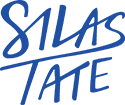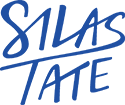Enterprise Architecture(EA) is a discipline practiced the last 30 years. It has largely been out of favor until the last several years. An architect became a theoretical methodologist, an enforcer, and in many cases a barrier to change. In the face of agile methodology, there was a complete backlash against the idea of architecture as a discipline even though the agile manifesto has no such reference. The real issue is that enterprise architecture and IT in general did not understand the business and were not iterative and could not react fast enough. The growing complexities and interdependencies between business and IT are driving a renewed interest in Enterprise Architecture. Without the right approach, companies pursuing digital transformation risk failure. Enterprise Architecture often becomes too theoretical to drive meaningful impact or is too focused on technology and disconnected from business planning.
Enterprise Architecture can avoid these pitfalls by balancing actionable projects with dynamic, long-term strategy with a practical approach. This new practical approach can help:
Accelerate decision-making and delivery of business outcomes
Organize and optimize infrastructure to align with business goals
Modernize and grow your IT department
Foster collaboration and alignment between business and IT leadership to generate tech-enabled innovations and operating models
Current Barriers
- Methodology & Tools- In recent years, EA has spawned methodology frameworks, certifications and software. These tools represent an evolution and provide discipline to building artifacts in a centralized and organized manner. However, the danger is that this new era of enterprise architecture can tend to lend itself to linear thinking and evolve to a religious approach like Agile. Agile is a great guideline and approach but it is not a religion to be followed. EA tools and frameworks are great for providing structure but the tool and framework should never become the driving force to slow or kill projects due to the inability to react and architect in real time. Enterprise Architecture is at a point in history where it needs to evolve.
- Complexity of Technology – Each new technology adopted adds to the complexity of your organization. People have to be trained. Systems need to be integrated. Legacy systems have to be retired and their capabilities transferred. If not handled properly, companies can develop a myopic focus on their shiny toys that leaves then siloed and fraught with redundant systems, inefficiencies and internal confusion. Even new cloud architectures can be cluttered with too many tools, services and components.
- People – Enterprise Architecture needs a new model of people. EA’s have failed due to lack of vision, lack of communication and lack of modern skills. They need to be master communicators to be able to work with the business (sales, operations, etc.), product leadership, business analysts, project managers, data scientists, data engineers, and developers. A consulting background can help sometimes with this. Additionally, the enterprise architect needs to be well versed in every kind of technology. This is difficult to do, but a commitment needs to be made to being the leader in general knowledge.
The Practical Approach
A practical enterprise architecture (EA) function creates a comprehensive decision-making framework that results in accelerated identification and prioritization of business and technology initiatives. The decision-making framework has foundational components (e.g., guiding principles) and domain-specific components (e.g., strategies, roadmaps, reference architectures) that work together to build a strategic “backbone” to support the execution of all downstream products, projects and programs.
Strategy
In collaboration with the broader organization and subject matter experts, enterprise architects curate foundational, enterprise-wide components for decision-making that inform and drive domain-specific strategies and roadmaps (i.e., EA strategy and EA roadmap) for each domain of the organization – technology domains, business domains, security and shared architecture domain.
In alignment with the organization’s overarching guiding principles, an EA strategy provides guidelines and guardrails for decision-making within a certain domain (e.g., storage, data governance, asset management). The EA strategy drives the development of an EA roadmap, which details the future capabilities desired within that domain. The curation, documentation and messaging of these desired future capabilities across the enterprise is the key deliverable of the EA function.
At the end of the day, EA is focused on capabilities of the organization. Once those are understood, the organization can build/buy tools and technologies that fit those desired future capabilities.
Architecture & Planning
By developing a dynamic and consistent decision-making framework across business and technology, the groundwork will be laid for the streamlined planning and delivery of transformational solutions. This includes, but is not limited to, collaboration, clear messaging, digestible EA artifacts and having a consultative, accessible EA team
Utilizing guidelines and guardrails established in EA strategy accelerates technology teams’ ability to confidently choose components & solutions that align to the future direction of the organization. By leveraging reference architectures and work unit dependency mappings, the creation of high and low-level design documents will be better integrated with the broader technology ecosystem. Projects and programs are identified, prioritized and executed with clear ties to top business initiatives and an understanding of the business value the technology solution enables.
How to get started
Develop a practical EA function within the organization and scale it to be impactful across the organization.
Position a current EA team to better influence strategy, planning and delivery decisions in order to become the connective tissue between the business and IT organizations within a company.
Take the future capabilities developed in an EA program and plan, design and initiate large, inter-dependent technology implementations.
Operational Readiness Assessments can be conducted to deep dive into the current state of a technology domain, identify gaps today versus the desired future state laid out in EA documents and provide investment recommendations around tools and resources to achieve future state.
By clearly tying technology decisions and investments back to business outcomes, technology organizations can become true partners with the business, all of which will be accelerated and productionalized through a practical EA function.
Components of a practical approach
A practical approach to EA lies between the two extremes of an ivory tower approach (theoretical) and a siloed approach (isolated / reactionary) and provides a cohesive long-term vision without sacrificing short-term wins.
Enterprise Architecture must sit between executive leadership and solution engineering to have the greatest impact on an organization. Through continuous collaboration and curation of information between the two, EA can craft artifacts that address prevalent business needs and evolve the perception of IT as a partner of the business instead of a cost center.
This approach customizes a governance methodology that embraces rigor and discipline without slowing things down to a point that impedes progress. It also emphasizes collaboration from the start, which helps garner buy-in across the organization up and down the chain of management.
The three key components to building a practical EA function are:
- Collaborate, collaborate, collaborate
EA teams need to descend from the ivory tower of abstraction and engage the rest of the business in their processes. Collaboration should be both upstream to executive leadership and downstream to key stakeholders, across the organization
In reality, executive teams own the EA portfolio of artifacts, not the EA team. Not only does upstream collaboration enable executives to advocate for the EA team’s strategies and architectures, it helps ensure artifacts are in line with overarching business strategy. Executives can also help build credibility by leveraging EA material in day-to-day messaging, making buy-in from the broader organization that much easier.
Collaboration downstream is also key. The EA team’s goal should be to curate the collective mindshare of the organization and document it in an organized and digestible fashion. Downstream collaboration builds consensus with key stakeholders, makes EA artifacts immediately actionable and gives stakeholders a sense of ownership over the artifacts. This promotes buy-in and wider usage throughout the organization. - Focus on the softer side of EA
EA leadership must emphasize hiring a team of people with the soft skills necessary to collaborate in the manner described above. Overlooking these skills can be detrimental to the success of the EA team.
The softer side of EA and its relation to the harder side is important to note that they are not mutually exclusive. In fact, they support each other and only together drive a successful EA function. To grow the impact EA has within an organization, the EA team must focus on and mature both the softer and harder sides. While the harder side is typically the core focus, without proper messaging and positive relationships with the rest of the organization, even the best artifacts and modeling will go unused and provide little value to the business.
Finding people who can execute both sides may be challenging, but it is worth the pursuit. Without the softer side of EA, the efforts put into the harder side will go to waste and the organization will suffer as a whole. - Build an EA function in a non-linear, iterative fashion
While the ideal EA function would be built out in a linear approach, an organization cannot halt business and IT functions for the sake of foundational EA artifacts. Many situations force an iterative approach to EA where an organization builds the foundational capabilities of EA at the same time that domain-specific artifacts are created for key domain areas. This flexible approach allows the business to derive value from critical domains while building core EA foundations in parallel.
Building an EA function in an iterative fashion may be the most challenging aspect of implementing a practical approach to EA and one that is completely dependent on the two other components discussed above.
While desire to build EA from the top down using a linear approach may be strong, flexibility is critical.
A more iterative approach, rooted in agile software development principles, enables EA teams to carefully select which initiatives or solutions to focus on while building the overarching EA program in parallel. Using this approach, the company is essentially building the plane while it flies.
An iterative approach to EA allows multiple workstreams to kickoff and progress in parallel, all while being executed in the EA mindset. As the foundational EA function matures, its influence on domain-specific workstreams grows and eventually becomes the core driver of all strategic decisions of the IT organization.
Foundational and domain-specific artifacts
In EA, there are foundational artifacts (e.g., overarching architectural principles, EA governance, capabilities domain mapping) as well as domain-specific artifacts (e.g., strategies, roadmaps, reference architectures).
Domain-specific artifacts depend on foundational artifacts. Because initiatives and solutions with specific domains are already underway for most businesses, an iterative approach to EA allows domain-specific activities to continue while the overarching and domain-specific EA artifacts are built in an agile manner.
The best way to demonstrate this relationship within the overall practical approach is with a case study.
Conclusion
The need for enterprise architecture is greater than ever due to multiplying complexities in business and technology. However, building and implementing an effective EA function can be challenging due to some common downfalls.
To overcome these challenges, we recommends a practical approach to EA that focuses on:
- Collaboration across the organization, both up and down the management chain;
- A combined focus on the softer and harder sides of EA, including emphasis on clear messaging, digestible and available artifacts, harnessing the power of persuasion and making sure the EA team is accessible; and
- Using an iterative approach to building the EA function.
This approach will lead to an EA team that accelerates confident decision-making and provides a holistic view of your company’s future capabilities. Strategies will rapidly turn into designs and solutions will be implemented at the speed of business.
2023 Silas Tate. All Rights Reserved


